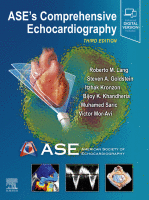Physical Address
304 North Cardinal St.
Dorchester Center, MA 02124

Acknowledgments The authors thank Drs. Jean G. Dumesnil and Haifa Mahjoub for their contributions to this chapter in the previous edition. More than 300,000 patients per year require valve replacement in the world, and this number is estimated to triple…

Tricuspid Stenosis Cause Tricuspid stenosis (TS) is the least common stenotic valvulopathy. TS is most commonly the result of rheumatic heart disease (RHD). Isolated involvement of the tricuspid valve (TV) is seen in congenital TS or in carcinoid heart disease.…

Trivial or mild degrees of pulmonic regurgitation (PR) are common in structurally normal hearts, and the presence of pathologic PR is rare in adults. Some degree of PR is present in between 5% and 78% in echocardiograms of patients with…

According to the American Heart Association (AHA) heart disease and stroke statistics, in the year 2014, more than 300,000 pacemakers (PMs) and 60,000 intracardiac defibrillators (ICDs) were implanted in United States. As the population continues to age, the number of…

Tricuspid valve (TV) disease or dysfunction is classified as primary (i.e., intrinsic) valve pathology or secondary. , Secondary or functional tricuspid regurgitation (TR) is the most common cause of TR and represents an important unmet treatment need given its prevalence,…

Tricuspid valve (TV) surgery has one of the highest morbidity and mortality rates of all cardiac surgical procedures. , This is not necessarily because TV repair (TVr) or TV replacement (TVR) is particularly difficult technically, but rather because the presence…

Two- and three-dimensional echocardiography (2DE and 3DE, respectively), combined with spectral and color-flow Doppler evaluation, provides the most accurate laboratory test in detection and quantification of tricuspid regurgitation (TR). “Physiologic” TR is associated with normal valve leaflet morphology and normal…

Tricuspid regurgitation (TR) is characterized by a variable amount of blood regurgitating from the right ventricle (RV) into the right atrium (RA) during systole, eventually leading to excess mortality and cardiac morbidity. Several studies showed that the prevalence of clinically…

Tricuspid Valve Anatomy The tricuspid valve (TV) is the largest of the four cardiac valves, with a normal valve area of 7 to 9 cm 2 . The TV lies between the right atrium and the right ventricle and is…

Mitral regurgitation (MR) is a load-dependent valvular disease, and its increase in severity during exercise has been reported irrespective of cause. The evaluation of MR limited to resting conditions risks may underestimate the full clinical impact of the lesion. Exercise…